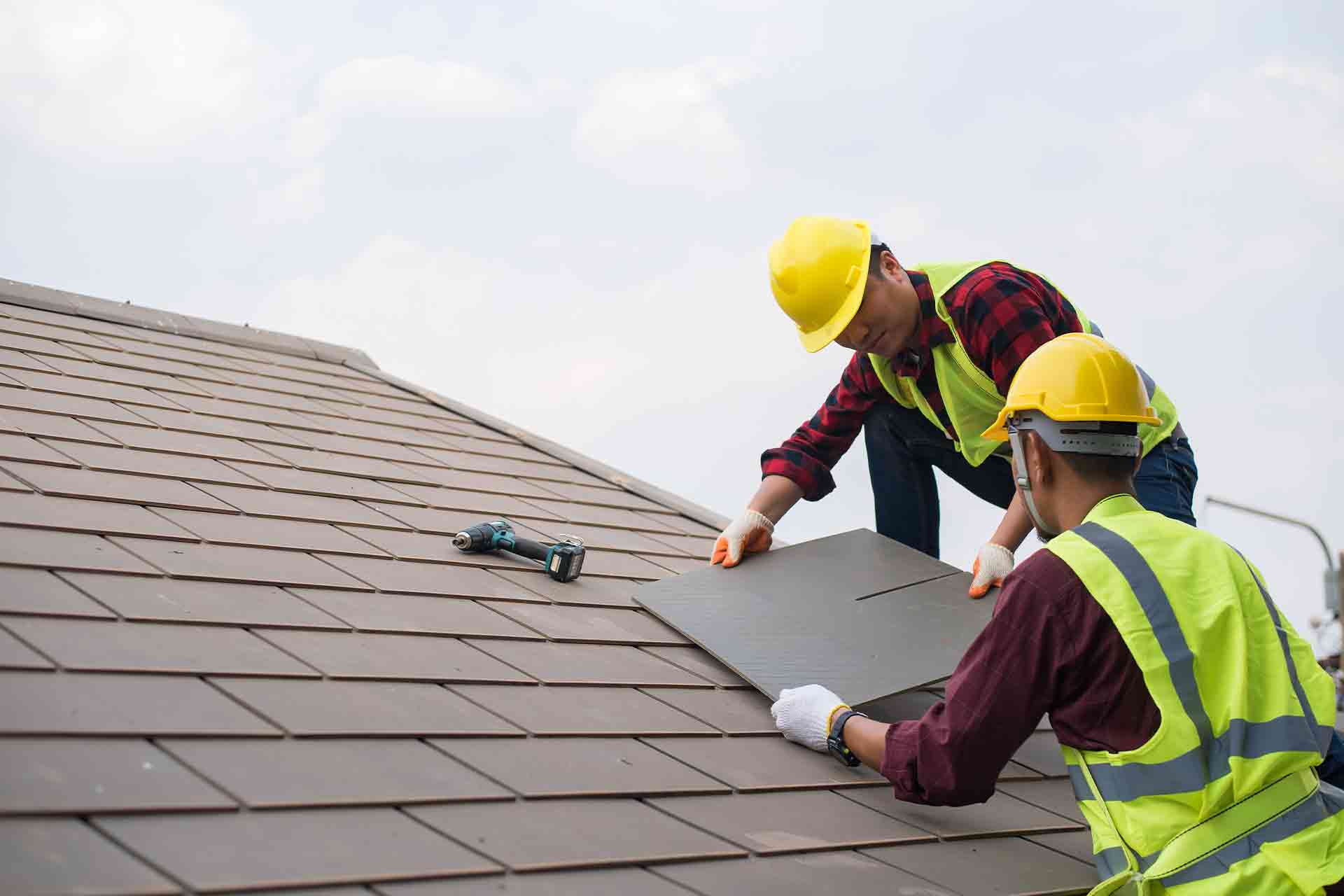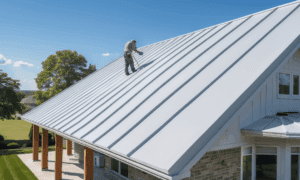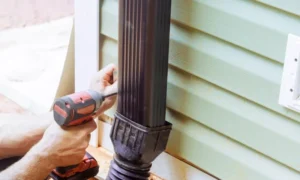A roof is much more than just a layer of shingles on top of a structure. It’s a critical component of any building, protecting everything underneath it from the harsh elements, insulating the home, supporting its structure, and contributing to its aesthetic appeal. For these reasons, roofing should never be treated as an afterthought.
Whether you’re building a new house, replacing an aging structure, or simply addressing minor leaks, the importance of hiring a qualified roofer cannot be overstated. The quality of workmanship and materials directly impacts how long your roof will last, how well it performs, and how much it ultimately costs you in the long run.
This article provides a comprehensive overview of what a roofing job entails, how to determine when your roof needs attention, and how to choose the right professional for the job. If you’ve ever wondered what separates an average roofing job from a high-quality one—or how to make sure your roofing investment is a smart one—read on.
The Essential Role of the Roof in a Building
The roof is often referred to as the first line of defense for a home. It shields your property from weather, helps regulate temperature, and maintains the structural integrity of the building. When roofs are compromised—by age, weather, or poor installation—the results can be costly.
Here are just a few things a well-maintained roof does for a home:
- Prevents water intrusion that can lead to mold, rot, and damage to insulation and framing.
- Provides thermal insulation, reducing heating and cooling costs.
- Improves ventilation and air quality by regulating moisture and temperature in the attic.
- Adds curb appeal and property value, particularly when using high-quality materials and designs.
When problems arise, many homeowners wait until visible damage occurs before taking action. However, roof issues often develop silently over time. Addressing small problems early—before they escalate into significant structural failures—saves time, money, and stress.
Common Signs That Indicate Roofing Problems
Your roof won’t always scream for attention. Sometimes, the signs are subtle—but catching them early can make all the difference. Keep an eye out for the following warning signs that you may need the help of a professional roofer:
- Water stains on ceilings or walls
- Peeling paint or mildew around the roofline
- Missing, cracked, or curling shingles
- Excessive granules in gutters
- Visible sagging or uneven roof lines
- Sunlight showing through roof boards in the attic
- Unexplained spikes in energy bills
These symptoms can point to anything from minor damage to a roof that is well past its prime. While some issues may only require basic repairs, others could indicate that your roof needs more comprehensive work—or even full replacement.
Types of Roofing Services
The scope of roofing work varies greatly depending on the issue at hand. Professional roofers offer a range of services, each tailored to specific needs. Understanding the differences can help you choose the best course of action.
1. Roof Inspections
Routine inspections are essential to prolong the life of your roof. A professional roofer will evaluate its condition, identify vulnerabilities, and suggest maintenance or repairs before serious damage occurs.
2. Repairs
From sealing small leaks to replacing a section of damaged shingles, repairs can address isolated issues without replacing the entire roof. Repairs are often cost-effective if done promptly.
3. Replacements
When repairs are no longer sufficient—typically after 20 to 30 years, depending on the material—a full roof replacement may be necessary. A new roof improves structural safety and can significantly boost your home’s value.
4. Maintenance
Preventative maintenance includes tasks like cleaning gutters, sealing flashing, and checking for ventilation issues. Regular upkeep can delay more expensive repairs and replacements.
Why DIY Roofing is Risky
It’s tempting for some homeowners to take matters into their own hands when roof issues arise. While DIY can be useful for small projects around the house, roofing is not typically one of them. Here’s why:
- Safety risks: Falls from roofs are a leading cause of home-improvement-related injuries.
- Lack of experience: Improper techniques can lead to leaks or voided warranties.
- Incorrect materials: Choosing the wrong type of shingle or underlayment can compromise your roof’s integrity.
- Hidden issues: What appears to be a small leak may be a symptom of much larger, unseen damage.
Hiring a professional ensures the job is done safely, correctly, and up to code. The expertise that an experienced roofer brings to the table includes not just technical skill but also deep knowledge of materials, climate effects, and construction best practices.
Selecting the Right Roofer: What to Look For
When it’s time to hire someone for your roofing needs, the market can feel overwhelming. Not all contractors are equal, and your choice can impact your home for decades. Here are the top qualities to look for in a roofer:
• Licensing and Insurance
Ensure the contractor holds proper licensing and insurance. This protects both you and the workers in the event of an accident or issue.
• Experience
Look for someone who has years of experience, especially with your specific type of roofing system. Asphalt shingles, metal, slate, and flat roofs all require different skill sets.
• Written Estimates and Contracts
Reliable professionals provide clear, itemized estimates in writing and won’t start work without a contract. Avoid contractors who ask for large payments upfront or who won’t put agreements in writing.
• References and Reviews
Customer testimonials, online reviews, and word-of-mouth recommendations can give insight into the contractor’s work quality and reliability.
• Warranty Offerings
Many reputable roofers offer warranties on both materials and labor. This ensures that if something goes wrong post-installation, you’re not left covering the cost.
Choosing a roofer with these qualifications ensures that your project is handled professionally and that you’re protected from future complications.
Roofing Materials and Their Longevity
The type of roofing material used plays a significant role in durability, cost, and maintenance. Here’s a quick overview of common materials:
- Asphalt Shingles: Affordable and easy to install. Lifespan: 20–30 years.
- Metal Roofing: Durable, fire-resistant, and long-lasting. Lifespan: 40–70 years.
- Wood Shingles/Shakes: Aesthetic appeal with moderate lifespan. Lifespan: 20–40 years.
- Clay or Concrete Tiles: Very durable but heavy. Lifespan: 50–100 years.
- Slate Roofing: Premium choice with exceptional longevity. Lifespan: 75–150 years.
- Flat Roofs (EPDM, TPO, etc.): Common on commercial buildings. Lifespan: 15–30 years.
Each material has its pros and cons, and a qualified roofer will guide you through choosing the best option for your home, climate, and budget.
The Roofing Process: Step by Step
If you’re preparing for a roofing project, understanding the steps involved can help reduce stress and ensure transparency.
- Initial Consultation
The roofer will evaluate your roof’s condition and discuss your concerns, budget, and material preferences.
- Detailed Estimate
After the inspection, you’ll receive a written estimate outlining the scope of work, timeline, costs, and warranty.
- Scheduling and Preparation
Once the contract is signed, materials are ordered, and a date is scheduled. The team will prepare the site to protect landscaping and surrounding areas.
- Removal of Old Materials
Old shingles and underlayment are stripped away, exposing the roof deck for inspection.
- Repairs and Installation
Any damaged areas are repaired, and new materials are installed according to manufacturer guidelines.
- Cleanup and Final Inspection
A thorough cleanup is performed, and the roofer conducts a final inspection to ensure everything meets standards.
Long-Term Care and Prevention
Once your roofing project is complete, maintenance doesn’t end. To keep your investment in top shape:
- Clean gutters and downspouts seasonally.
- Trim overhanging tree branches.
- Schedule inspections after major storms.
- Monitor your attic for signs of moisture or poor ventilation.
Proactive care can add years to your roof’s life and ensure you get the most out of your investment.
Final Thoughts
Your roof is one of the most vital parts of your home. It safeguards your property, enhances its appearance, and plays a crucial role in comfort and efficiency. Whether you’re facing minor damage, considering a new installation, or simply keeping up with maintenance, working with a skilled roofer ensures that your roofing system is built to last.
From initial consultation to final inspection, choosing the right professional can make all the difference. Don’t wait for a minor issue to become a major problem. With expert advice and craftsmanship, your roof can continue to protect your home for decades to come.



































